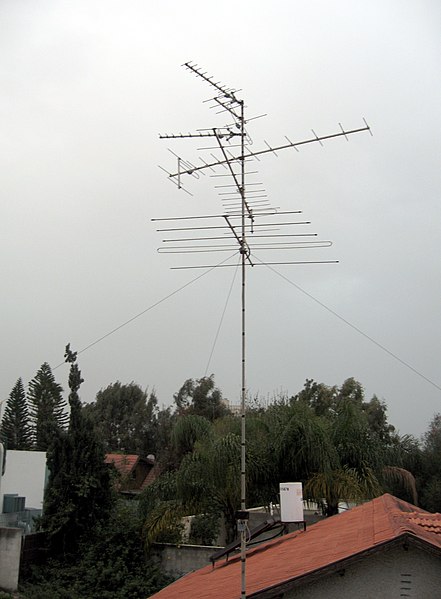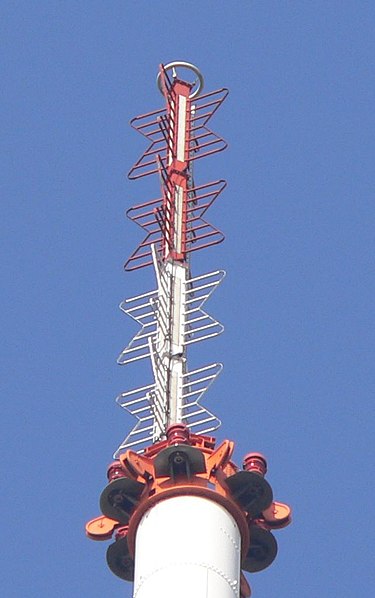The 6-meter band is the lowest portion of the very high frequency (VHF) radio spectrum internationally allocated to amateur radio use. The term refers to the average signal wavelength of 6 meters.
A Yaesu FT-857D tuned to 50.125 MHz, the traditional 6-meter single-sideband calling frequency in the United States.
Car-mounted 6 meter halo antenna for mobile amateur radio (WA8FJW).
A Gonset Communicator II 6 meter AM transceiver. This vacuum tube radio with a magic eye tube tuning indicator, was affectionately known as a "Gooney Box" and was popular in the 1950s and 60s. A 2 meter version was also sold.
QSL card confirming an intercontinental contact between Argentina and Greece on 50 MHz
Very high frequency (VHF) is the ITU designation for the range of radio frequency electromagnetic waves from 30 to 300 megahertz (MHz), with corresponding wavelengths of ten meters to one meter.
Frequencies immediately below VHF are denoted high frequency (HF), and the next higher frequencies are known as ultra high frequency (UHF).
VHF television antennas used for broadcast television reception. These six antennas are a type known as a Yagi antenna, which is widely used at VHF.
"Rabbit-ears" VHF television antenna (the small loop is a separate UHF antenna)
A VHF television broadcasting antenna. This is a common type called a super turnstile or batwing antenna.







